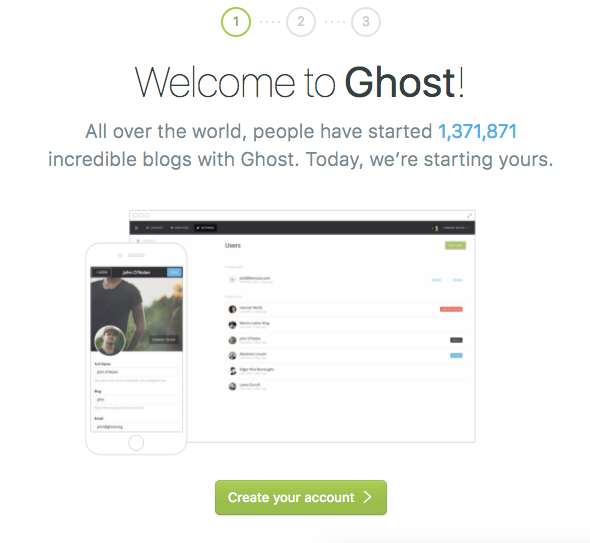Starting a Blog (2): Ghost CMS

L34P.tk was built on DigitalOcean VPS and Ghost CMS.
Those who've got a server running for the first time would most probably think, "What next?", which is a good question. Many are overwhelmed by the possibilities of what you could do with a website and just don't know were to start. So, why not go old school and create a blog for yourself?
Ghost
Ghost is an open sourced Content Manager System (CMS) for building websites, blogs, etc. Ghost has an easy-to-use editor for beginners, and if your good enough, you could customize your own website with Markdown, or even throw in a whole chunk of HTML. Flexible. That's just what we want.

That being said, you won't be restricted to a few templates that doesn't meet your requirements. You also have far more control over your content as each blog is separated from each other.
If you haven't got a dedicated server, you should check out how to get a VPS here.
Here are some software requirements before you install Ghost. (The following tutorial assumes that all requirements have been installed)
- Ubuntu Server 16.04 (if you haven't got a server, click here)
- Node.js
- Nginx
- MySQL
After installing the basic requirements, it is time to install Ghost.
First, connect to your server via SSH and create a directory for ghost and switch to that directory.
sudo mkdir -p /var/www/ghost
cd /var/www/ghost
Next, we have to ensure that the user owns the directory and that others have reading and executing permissions (let the user be 'bird').
sudo chown bird:bird /var/www/ghost
sudo chmod 775 /var/www/ghost
Install the CLI for Ghost via npm.
sudo npm install --global ghost-cli
Finally, install ghost.
install ghost
The installer will ensure that all prerequisites are installed and download ghost. Once the installation is complete, you'll be prompted for required information for configuration. Follow the steps and you'll be fine.
Once the configration is done, you could visit your website on your browser by typing in https://your-domain-name/login (or https://your-IP-address/login) and you should see this...

There you have it, create your account and you are ready to blog.
If you're having a hard time installing the prerequisites, you could still create your blog within a few clicks as shown here.
Shout out to Noob's Space for introducing this platform and making this a possibility.
